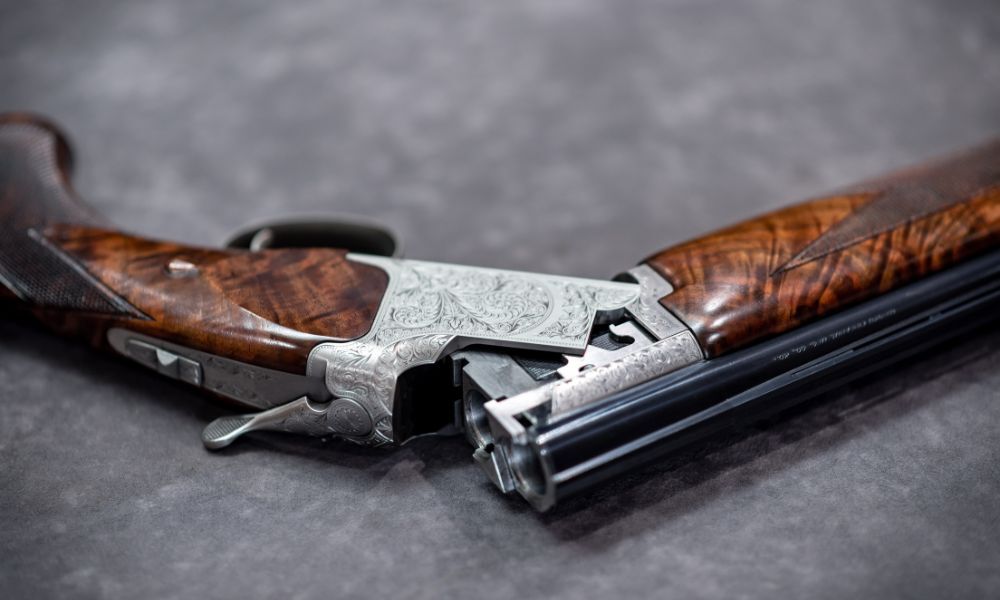The Echo of the Hunt: A Journey Through the History of the Shotgun
Posted by Arms Protection on Aug 25th 2025
From the muddy battlefields of Europe to the pristine clay courses of today, the shotgun has a history as rich and varied as the game it was designed to hunt. It's more than just a firearm; it's a testament to human ingenuity, a tool of survival, and a symbol of sport and tradition. So, let's take a journey back in time and explore the fascinating evolution of this iconic firearm.
The Dawn of the Scattergun: The Early Years
The story of the shotgun is deeply intertwined with the development of firearms in general. Its roots can be traced back to the 15th century, with the invention of the "hand cannon." These early, rudimentary firearms were essentially tubes loaded with gunpowder and some form of projectile. Over time, as technology improved, the projectiles evolved from single lead balls to a "scattered" load of smaller pellets, which proved to be far more effective for hunting small game and birds. The term "shotgun" itself didn't come into common use until the early 18th century. Before then, these early scatterguns were known by a variety of names, including "fowling pieces" and "blunderbusses." The blunderbuss, in particular, with its flared muzzle, was designed to spread its shot over a wider area, making it a formidable weapon for close-quarters combat and defense on stagecoaches and ships.
The Age of Innovation: From Flintlock to Percussion
The 18th and 19th centuries were a period of rapid innovation for the shotgun. The most significant leap forward came with the transition from the unreliable flintlock ignition system to the more reliable percussion cap. The percussion cap, a small metal cup containing a sensitive explosive, made firearms more weather-resistant and far quicker to fire. This innovation paved the way for the double-barreled shotgun, a configuration that allowed hunters to get a second shot off almost instantly. The late 19th century also saw the rise of the breech-loading shotgun, which replaced the cumbersome and time-consuming muzzle-loading process. Instead of loading powder and shot down the barrel, hunters could now insert a self-contained cartridge into the breech, a design that is still the standard today. The invention of the paper and brass shell in the 1860s made the breechloader a practical reality, solving the problem of gas leakage and making it a safer and more reliable firearm.
The Modern Era: Pump, Semi-Auto, and Beyond
The 20th century saw the shotgun evolve into the versatile tool we know today. The development of smokeless powder in the late 19th century made ammunition more powerful and less fouling, which led to the creation of the pump-action shotgun. The iconic "corncob" forend, which a shooter pumps back and forth to eject a spent shell and load a new one, made for a fast and reliable action. The first commercially successful repeating pump shotgun was the Spencer 1882, but it was John Moses Browning who perfected the design with the Winchester Model 1897, making it a favorite of law enforcement and military personnel due to its durability and simplicity. The semi-automatic shotgun, which uses the force of the fired shell to cycle the action, followed shortly after. While initially more complex and expensive, the semi-auto offered an even faster rate of fire and reduced recoil, making it a favorite for competitive shooting and waterfowl hunting. John Browning also holds the patent for the first successful semi-auto shotgun, the Auto-5, which was introduced in 1903.

The Shotgun in Sport, Military, and Law Enforcement
Beyond hunting, the shotgun cemented its place in American culture and beyond through sport and tactical use. Clay target shooting sports like trap and skeet, which originated in the late 19th and early 20th centuries, were built around the shotgun's unique ability to hit fast-moving targets. In a military context, the shotgun proved its brutal effectiveness in the trenches of World War I, where its short-range power earned it the nickname "trench broom." Today, the shotgun is a standard for law enforcement for its versatility, used for everything from door breaching to delivering less-than-lethal rounds. Its ability to be a formidable close-quarters weapon and a precision tool at the same time makes it a unique asset.
The Shotgun Today: A Legacy of Versatility
Today, the shotgun remains a cornerstone of the shooting world. From the classic side-by-side double-barreled shotgun cherished by upland bird hunters to the high-tech, tactical semi-autos used by competitive shooters, the shotgun's legacy is one of adaptability and enduring appeal. It's a tool for sport, a guardian of the home, and a link to a history that stretches back centuries. So the next time you hear the satisfying "click-clack" of a pump-action or the crisp report of a double-barreled shotgun, remember the long and winding journey this firearm has taken. It's a journey that began with a simple tube and a charge of powder and has evolved into a symbol of skill, tradition, and the timeless call of the hunt.

